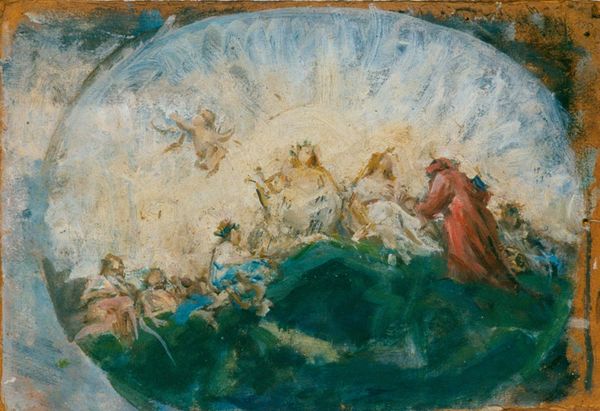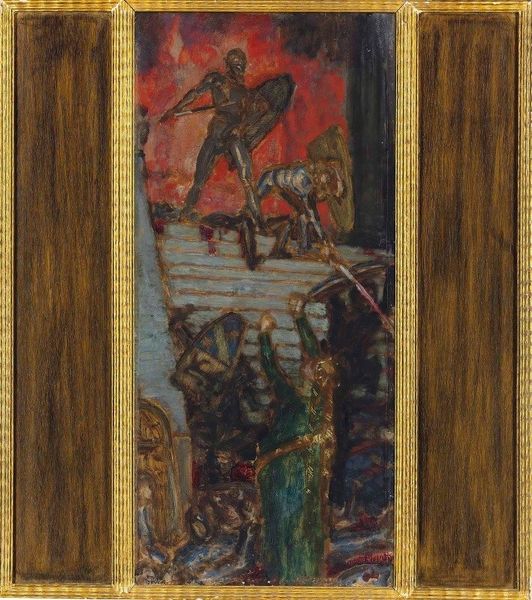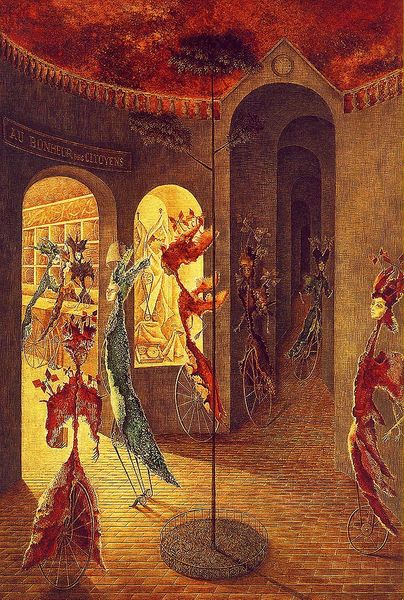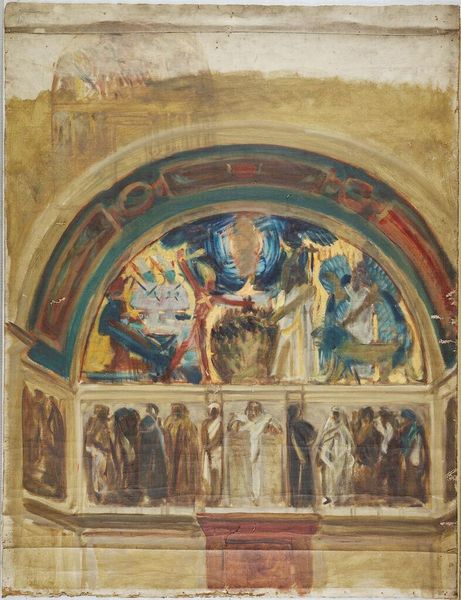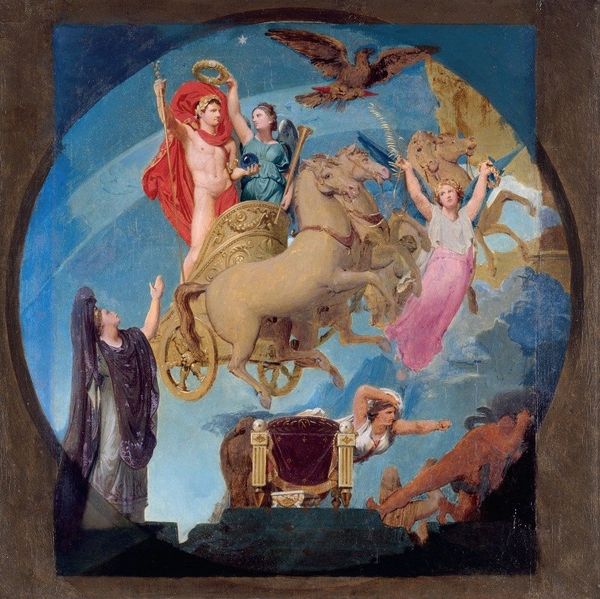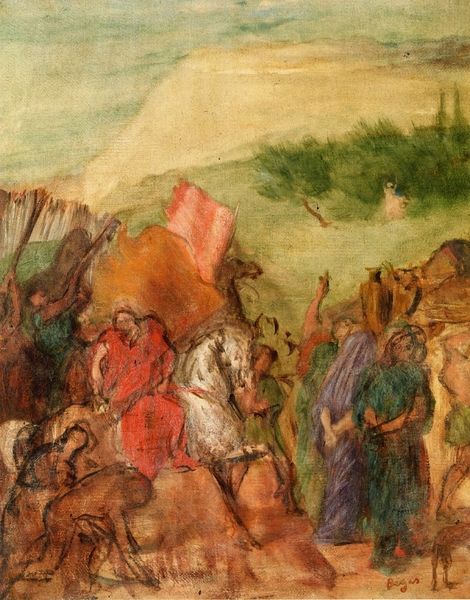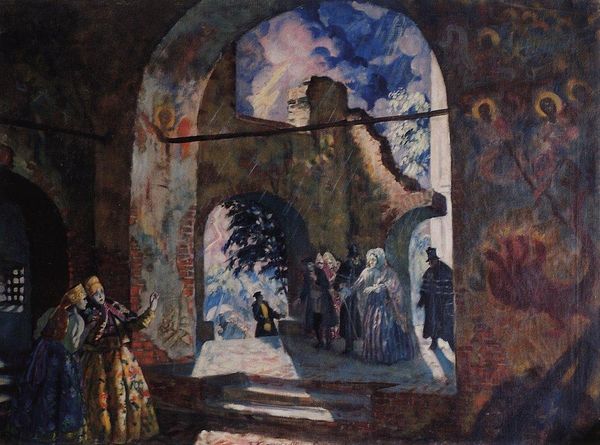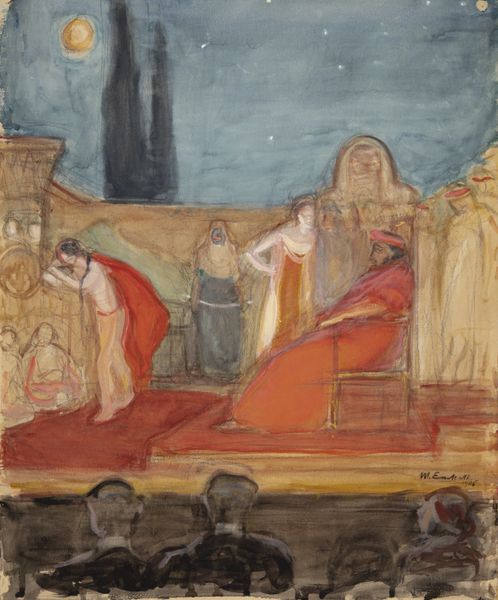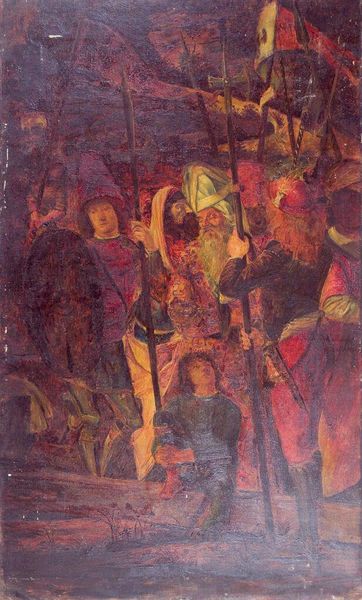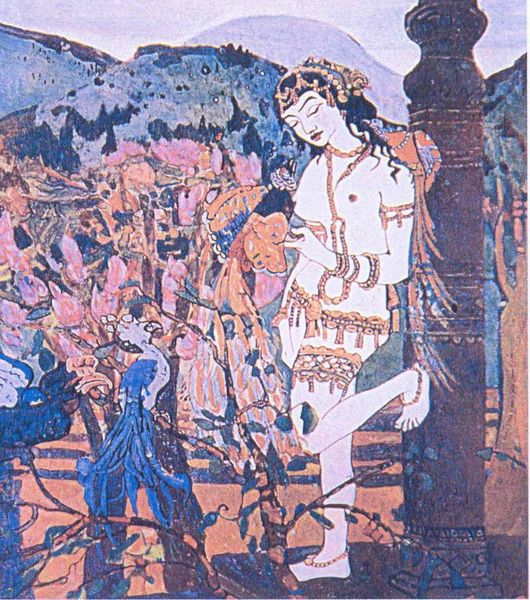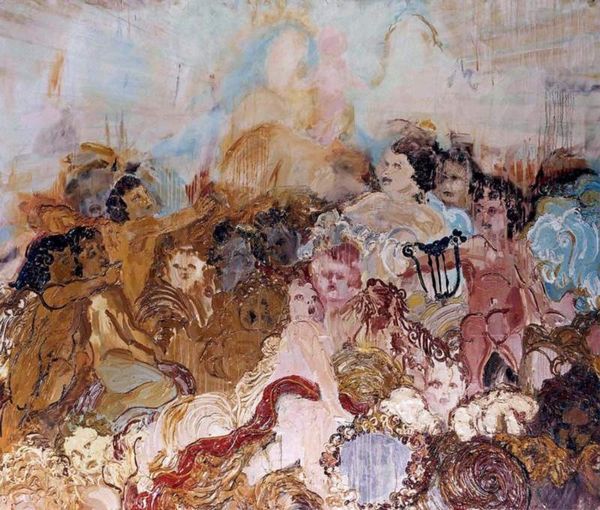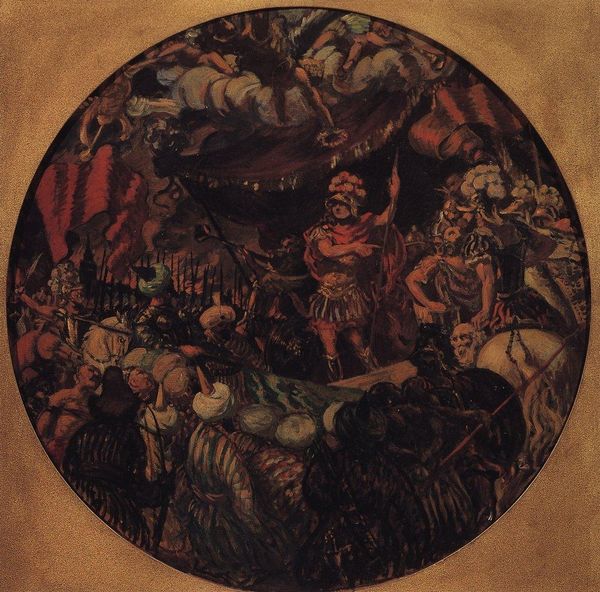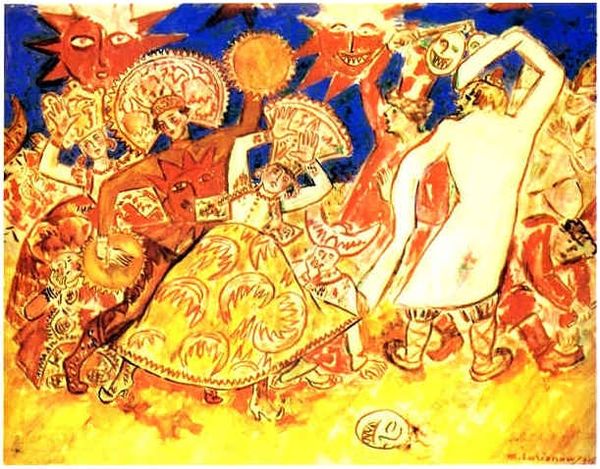
painting, oil-paint
#
allegories
#
allegory
#
painting
#
oil-paint
#
figuration
#
oil painting
#
russian-avant-garde
#
history-painting
Copyright: Public domain
Editor: Here we have Boris Kustodiev’s oil on canvas painting, “Joining Kazan to Russia. Allegory,” from 1913. I find it somewhat chaotic, like a theatrical stage crowded with figures. What's your take on it? Curator: The “Joining Kazan to Russia” is indeed theatrical, but that's precisely where its power lies. Kustodiev presents us with an allegory of imperial expansion, a joining, but we have to ask ourselves: Joining whom, and under what terms? It seems a very slanted view of "peaceful unification." Editor: What do you mean by slanted? Curator: Consider the positioning. Russia, represented as a white veiled figure, literally stands on a higher plane. There's also an unequal distribution of gazes, suggesting a dynamic of power and subordination. How does this "joining" reflect on the diverse ethnic groups portrayed, especially concerning issues of identity and self-determination? It feels romanticized, doesn't it? Editor: Definitely, and now I see how Kustodiev highlights those hierarchies through the composition itself. It makes me question whose story is really being told, and from what perspective. I see Kustodiev seems to idealizing that time. Curator: Exactly! Art is never neutral. Even when it depicts historical events, it's always filtered through a specific lens. Reflect on how art served as propaganda, subtly shaping perceptions and reinforcing dominant narratives throughout history. Editor: This definitely makes me reconsider the narratives we are presented with when looking at historical art! Curator: Precisely, understanding the sociopolitical context behind this artwork helps to better recognize art’s influence.
Comments
No comments
Be the first to comment and join the conversation on the ultimate creative platform.
